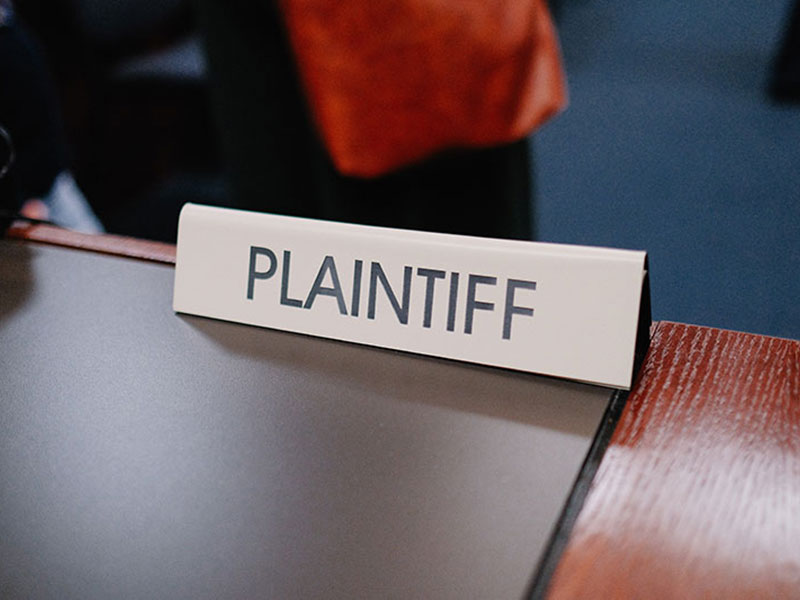Punitive Damage Caps, Ratio, and Real-Life Impacts in California

When clients come into our office with a personal injury case, one of the questions we get is – what are punitive damages? There tends to be confusion around how punitive damages work, when courts may award them, how jurors calculate punitive awards, and what constraints California places on exemplary damages.
Our years of experience with California personal injury law have given us deep insight into when punitive damages may come into play in injury cases and how plaintiffs can seek this extra compensation under state laws. Today, let’s decode what California’s punitive damages are all about.
What are Punitive Damages?
Also known as exemplary damages, this legal remedy is monetary compensation awarded to a plaintiff in a civil lawsuit in addition to (and separate from) economic and non-economic damage awards.
The key difference versus typical remedies awarded is that punitive damages are awarded not to compensate the plaintiff for their losses or suffering. Instead, they aim to punish the defendant for their actions and deter similar egregious behavior in the future.
Whereas compensatory damages in a personal injury seek to make the plaintiff ‘whole’ again by covering medical bills, lost wages, pain and suffering, and other losses, punitive damages have a unique role.
Their goal is to hit defendants where it hurts – their wallets – through substantial financial penalties, making sure the defendant feels real economic consequences for their harmful actions.
Limits on Punitive Damage Awards in California
California Civil Code 3294 (Cal. Civ. Code §3294) states that in non-contract cases like personal injury, punitive damages may be awarded by a jury or judge “for the sake of example and by way of punishing the defendant.”
This legal theory sets punitive damages apart from compensatory damages that aim to provide actual compensation proportional to the plaintiff’s harm.
Unlike some states, California does not cap punitive damages in injury lawsuits. However, the US Supreme Court ruled punitive awards must be reasonably proportionate. Even without a statutory limit, the 14th Amendment still protects against unjust punishments. So, California courts are still constitutionally required to ensure punitive damages fit the defendant’s misconduct. The goal is aligned with fair punishment principles despite no strict dollar cap under state law.
Pleading and Proving Punitive Damages in California Injury Cases
Jurors cannot voluntarily award punitive damages. Plaintiffs must first plead these remedies and prove the defendant’s gross negligence or intentional harm. California personal injury attorneys have established cases where an individual or company willfully ignored a person’s safety and rights, warranting high-figure punitive damage awards.
Large corporations sometimes cause harm knowingly for the sake of profits. Punitive damages enforce good behavior beyond compensating the plaintiff by severely punishing conscious wrongdoing and scaring potential bad actors with heavy financial consequences.
Breaking Down California’s Punitive Damage Award Statutes
Cal. Civ. Code §3294 provides specific guidance on when jurors may award punitive damages in civil lawsuits and provides caps on potential awards. The statute notes that in non-contract injury cases, such as,
- Product liability
- Auto collisions
- Premises liability
- Personal injuries and more
the courts may award punitive damages “where it is proven by clear and convincing evidence that the defendant has been guilty of oppression, fraud, or malice.”
The law further defines these terms as:
- Malice – conduct intended to cause injury with willful and conscious disregard of the rights or safety of others.
- Oppression – despicable conduct in conscious disregard of a person’s rights.
- Fraud – intentional misrepresentation or deceit.
Additionally, Cal. Civ. Code §3294 states that the courts may only award exemplary damages when the jury unanimously finds the defendant guilty of malice, oppression, or fraud. The plaintiff must also prove the defendant’s outrageous conduct and requisite mental state through admissible evidence.
California’s “clear and convincing” evidence standard in punitive damage cases sets a high proof bar beyond the typical “preponderance of evidence” used in most civil cases. Additionally, the state limits excessive or disproportionate punitive awards not driven by facts.
Punitive Damages Examples – When Do They Apply?
Exemplary damages kick in for civil cases when the plaintiff proves recklessness beyond mere negligence – dangerous acts involving intentional malice, oppression, deceit, or other intentional wrongdoing.
Punitive damages in personal injury lawsuits often come into play in:
- Auto Collision Lawsuits – Punitive damages may apply when a driver was intoxicated or demonstrated a willful disregard for safety, leading to a severe crash causing harm. For example, texting while driving despite clear dangers shows gross recklessness, warranting punishment.
- Premises Liability Cases – Property owners who consciously ignore risks and fail to remediate known hazards like unsafe stairs, poor lighting, or lax security may face punitive damages if such willful neglect causes plaintiff slip and fall injury.
- Product Liability Disputes- Manufacturers aware of design flaws or risks that proceed intentionally for profits may warrant punitive damages if defects cause consumer harm. This punishment helps deter conscious disregard for safety.
- Insurance Bad Faith Claims– Insurers denying legitimate claims despite policyholder rights may face punitive damages for oppressive conduct under California law. This deterrence helps protect consumer interests.
- Assault and Battery Cases – Defendants who intentionally attack or harm victims could see civil punitive damages compound with their criminal penalties for willful violence against individuals. This penalty provides harsher deterrence.
The court will instruct the jury on evidence rules like the “Clear and Convincing Evidence” standard that guides punitive damages. The plaintiff’s lawyer establishes the defendant’s reckless behavior through discovery, witness testimony, documentation of malicious intent, and other evidence.
How Do Courts Calculate Punitive Damage Awards?
Punitive damage awards are inherently subjective – they represent the jury’s discretionary view of penalties warranted based on how reprehensible the defendant acted, the level of harm and culpability, and the amount of punitive damages required to deter such behavior in the future.
California Judicial Council of California Civil Jury Instruction 3940 (CACI 3940) holds the rules that juries must follow when calculating punitive awards.
Per the instructions, the fact finders must consider multiple weighted factors before debilitating award amounts:
- How reprehensible was the misconduct? More offensive, deceitful behavior warrants more significant sanctions.
- What actual harm did the misconduct cause? Higher tangible or intangible damage merits higher penalties.
- What was the defendant’s awareness and culpability behind the misconduct? More intentional wrongdoing deserves harsher punishment.
- How severe does the sanction need to be to deter similar future misconduct? More considerable penalties are needed to discourage profit-driven decisions by wealthy corporations.
CACI 3940 guidance also requires punitive damages to bear a reasonable relationship and proportion to the actual compensatory damages – per state Supreme Court judgments, typically less than ten times the compensatory amount. This constraint avoids arbitrarily high awards.
Why Wealthy Defendants Pay More in Punitive Damages
While compensatory damages derive from economic losses like medical bills, missed wages, and intangible pain and suffering, punitive awards involve more abstract calculations of appropriate punishment.
This legal theory means the wealthier the defendant must pay more prominent awards to make genuine financial impacts – small dents for multi-billion corporations may bankrupt ordinary individuals.
Calculating punitive damages requires applying discretion and balancing punishment suitable for the misconduct. Some cases warrant minimal punitive awards, while particularly gross negligence or intentional company policies that cause significant harm may justify eight or nine-figure judgments.
Assessing Options and Preparing Claims For Your California Personal Injury Case
If you or a loved one has been injured due to the gross negligence or intentional misconduct of an individual or company, do not hesitate to exercise your legal rights. Work with our experienced personal injury attorney to carefully assess the facts of your unique case, build a claim focused on full accountability, and pursue maximum allowable damages under the law.
While punitive damages face proportionality considerations, skillful representation could still result in a significant award serving justice and sending a strong warning message on behalf of the injured. Punishing disregard for human safety and well-being requires hardship for offenders and empowerment for victims.
Contact our team of California personal injury lawyers today to discuss the details of your situation in a free case evaluation. We will help you understand all your options.
